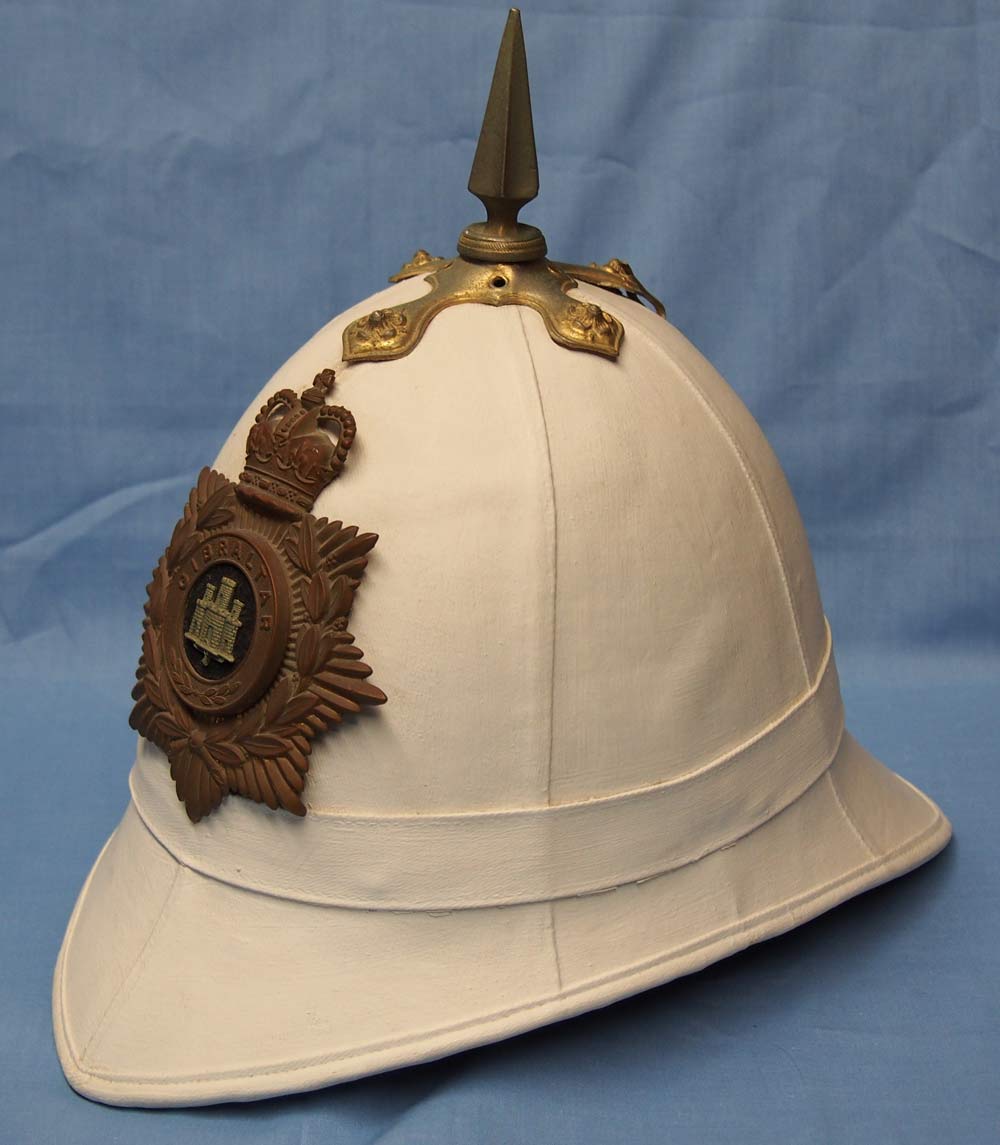 The British “Foreign Service Helmet” was introduced in the 1870s for use in its overseas colonies. Around the same time the “Home Service Helmet” – known today amongst collectors as the “blue cloth helmet” – was introduced for use by units the British Army whilst stationed in the UK. The Foreign Service Helmet notably was replaced by the Wolseley pattern helmet, while the Home Service Helmet remained in use through World War I and was gradually phased out in the years following the horrific conflict.
The British “Foreign Service Helmet” was introduced in the 1870s for use in its overseas colonies. Around the same time the “Home Service Helmet” – known today amongst collectors as the “blue cloth helmet” – was introduced for use by units the British Army whilst stationed in the UK. The Foreign Service Helmet notably was replaced by the Wolseley pattern helmet, while the Home Service Helmet remained in use through World War I and was gradually phased out in the years following the horrific conflict.
Today both patterns have been relegated for use by bandsman and for certain very formal situations. It is the latter situation where the helmet was reintroduced not once but actually a total of three times for a unit that actually didn’t exist back in the 1870s.
The Royal Gibraltar Regiment is today a home defence unit for the British overseas territory of Gibraltar, and it was originally formed in 1958 from the Gibraltar Defence Force as an infantry unit, with an integrated artillery troop. It is now included in the British Army as a colonial force, but it recruits from the United Kingdom, the Republic of Ireland and the Commonwealth. In 1999 the unit was granted a Royal title.
The regiment undertakes army ceremonial tasks in Gibraltar as it is the only major unit based there. It is responsible for the ceremonial guard of the Governor at his residence the Convent, and it performs the ceremony of the keys twice a year and the Queen’s Birthday Parade in Casemates square.
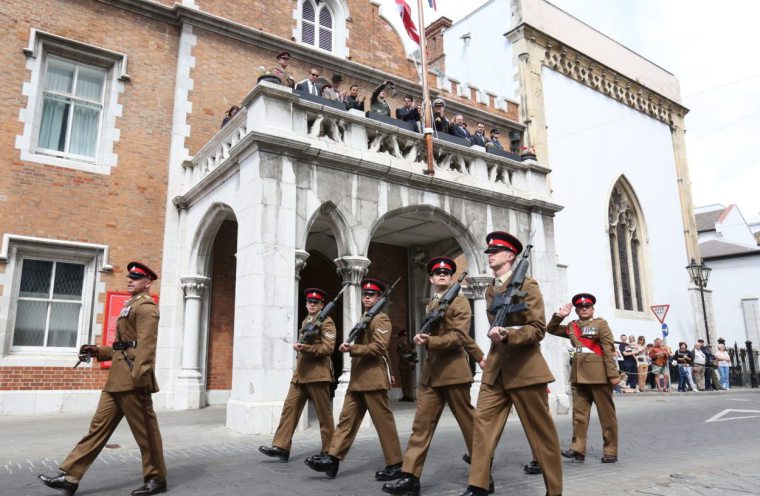
Troops of the the Royal Gibraltar Regiment in walking out uniforms marching past the Governor at his residence.
However, in the past 20 years the unit has taken on other ceremonial duties. The regiment performed its first public duties in London in 1998 by firing a 62 royal gun salute at the Tower of London on the occasion of HM the Queen’s Birthday, a duty normally carried out by the Honourable Artillery Company.
In March 2001, for the first time, the regiment mounted the guard at Buckingham Palace and in April 2012 the Royal Gibraltar Regiment once again provided the Queen’s Guard at Buckingham Palace during the Queen’s Diamond Jubilee celebrations.
For these duties the Royal Gibraltar Regiment required a more formal headdress than the visor cap that was worn for walking out duties. The unit opted to use the classic “colonial pattern” Foreign Service Helmet, which is somewhat ironic as the unit is posted overseas and appears to have had these helmets produced for use in the UK – thus making the akin to a “Home Service Helmet.”
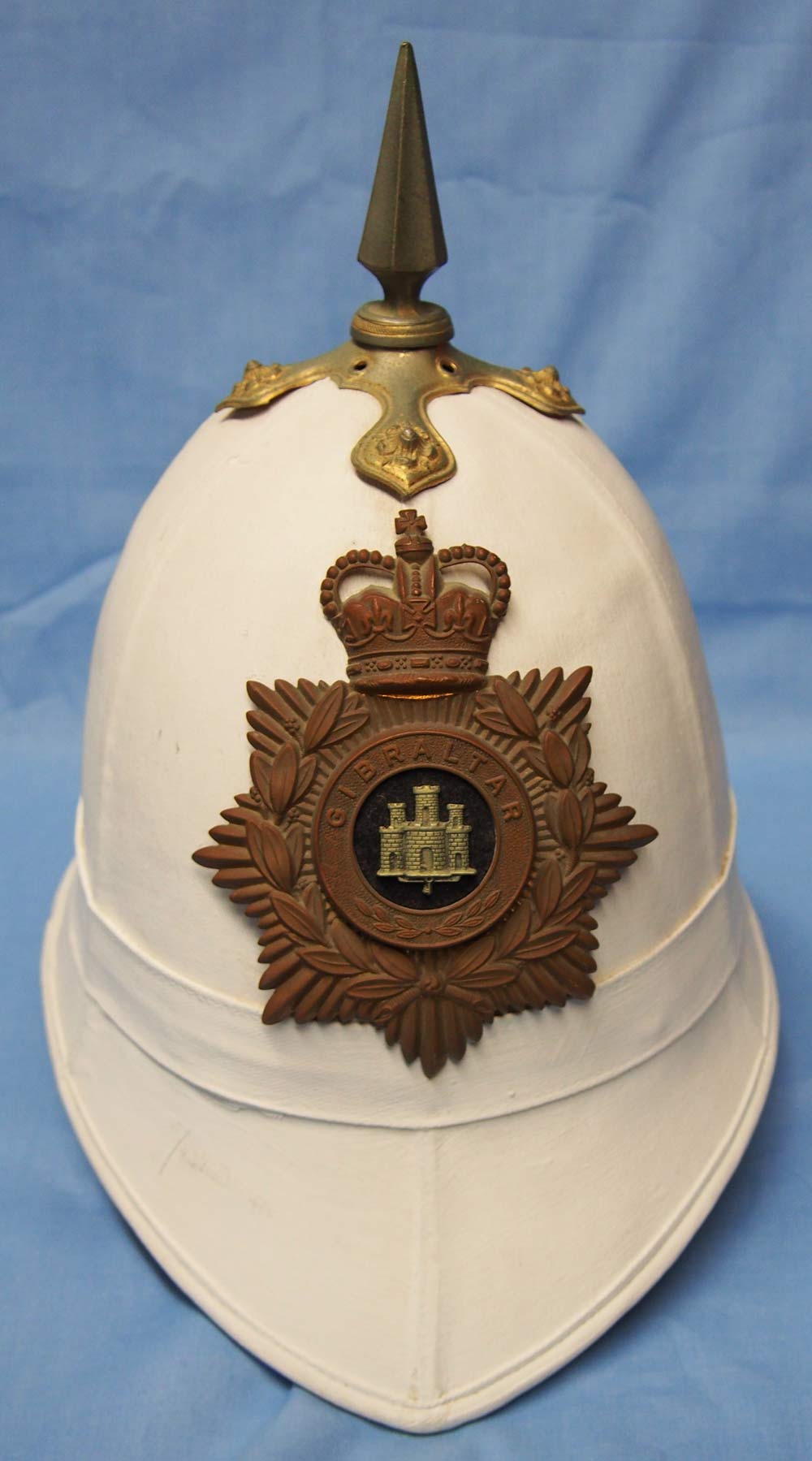
At first glance this could be mistaken for a late 19th century Foreign Service Helmet with the other ranks badge to the Royal Gibraltar Regiment. This crown differs however from the Queen’s Crown that was used during the reign of Queen Victoria. (Author’s collection)
According to the unit’s media relations officer, new helmets were ordered in 1998 from Hobson and Sons, a military outfitter that was established in 1850.
The helmets that were provided for use in 1998 and likely used again in the 2001 guard duties seem very much based on the patterns used by Commonwealth forces – including those of the Canadian Army – at the end of the 19th and early 20th centuries. The helmets were fitted with a helmet plate that at quick glance could be mistaken for a Victorian helmet plate – except for the fact that the unit didn’t exist at the time. The crown also differs of course and in some ways almost is a cross between the old-styled Queen’s and King’s crowns.
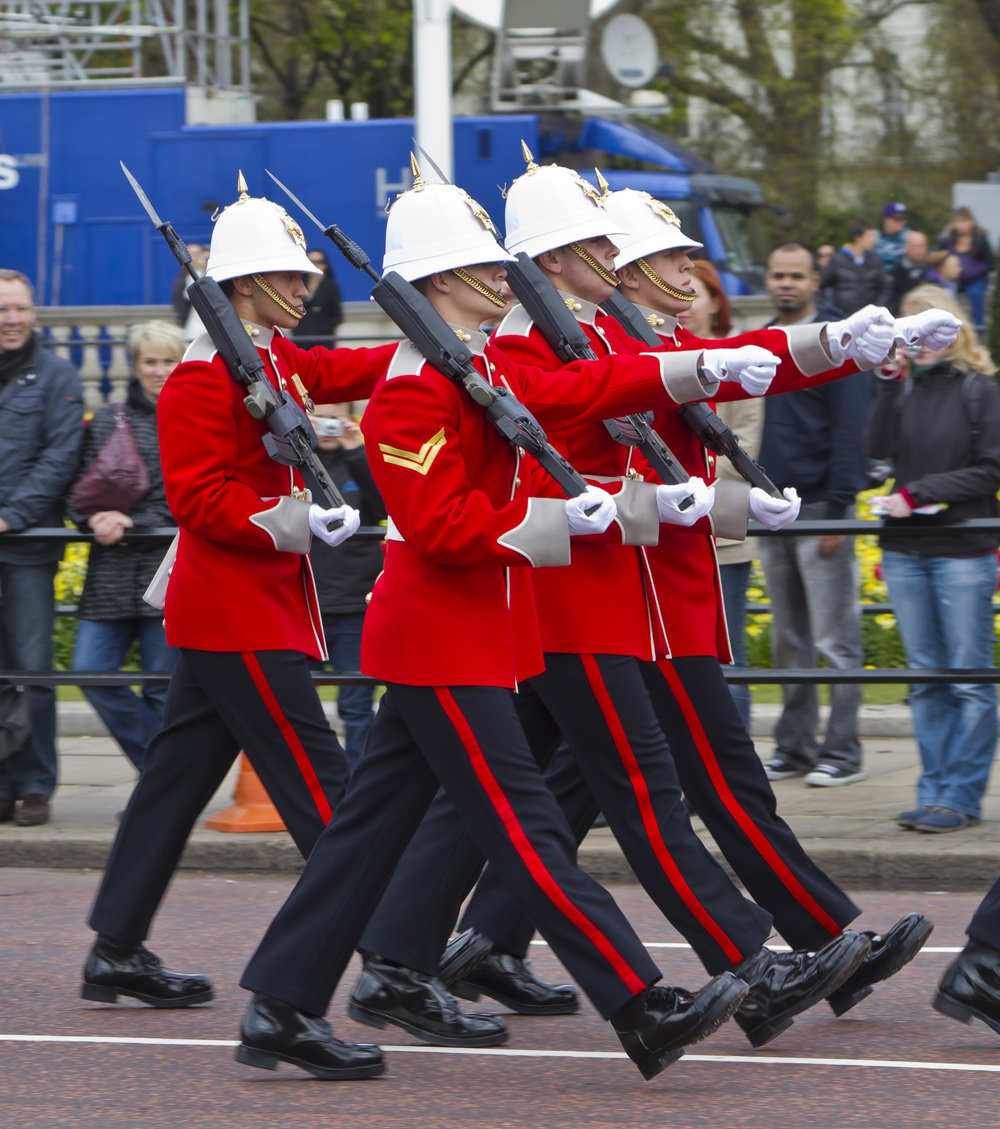
The Royal Gibraltar Regiment in London in April 2012. Apart from the modern scenery in the background and the fact that these soldiers are carrying SA80 assault rifles rather than Martini-Henry rifles these soldiers look little different from their Victorian Era counterparts.
The gilting on the helmet is not near the quality of the old helmets however, and based on the example in the author’s collection it appears these helmets were used by more than one owner. The helmet has been heavily whitened and this was haphazardly done based on the amount of blanco on the interior brim.
This cork helmet – at least from the weight and feel it appears to be cork – has a synthetic liner and lacks the ventilation of the original Home Service Helmet patterns. Comfort may have been a secondary concern over a helmet that looked good during ceremonial use.
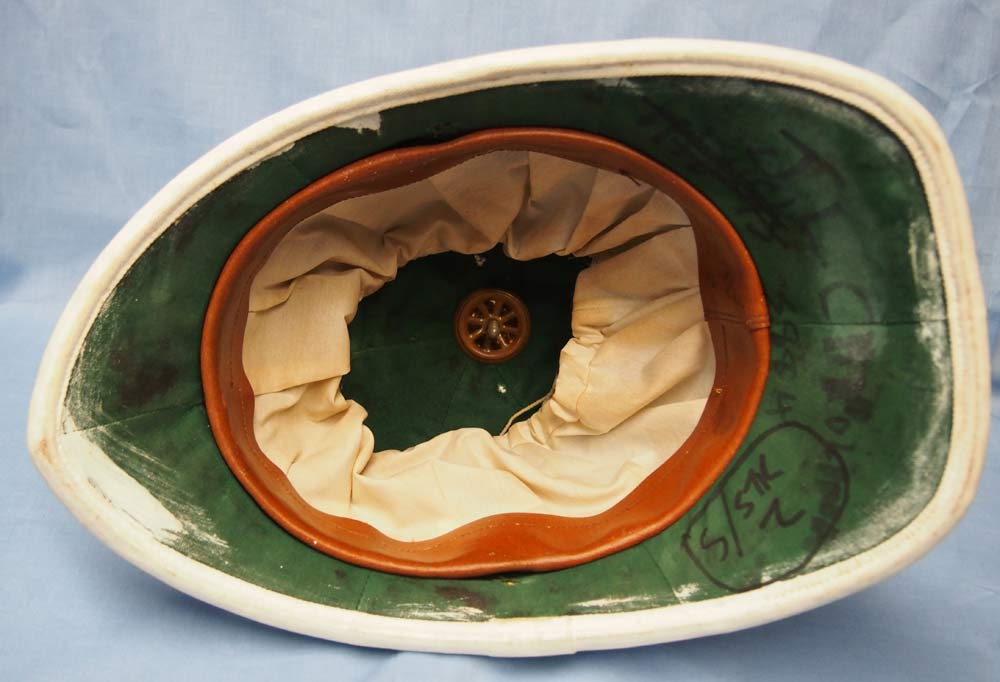
The interior of the cork helmet used by the Royal Gibraltar Regiment for its ceremonial duties in 1998 and again in 2001. This helmet has at least three names and other writing on the back brim. Sloppy can only describe the way the blanco or other polish was applied! (Collection of the author)
While most of the regiment continued to wear visor caps for the duties at the Convent, when the unit was again given the honor of guarding Buckingham Palace in March 2012 another batch of helmets was purchased from Hobson and Sons. According to the media relations officer just over 100 helmets were purchased at a cost of £200.00 for other ranks and £300.00 for officers.
What is notable about these helmets is that instead of cork the body of these helmets was fiberglass! Of course this same material was used in the construction of the Royal Canadian Regiment’s Wolseley pattern helmets. No doubt the thinking was that these helmets would be more rugged and possibly could remain in use longer. Attempts to purchase an example in 2012 proved fruitless as Hobson and Sons doesn’t offer such helmets to the general public.
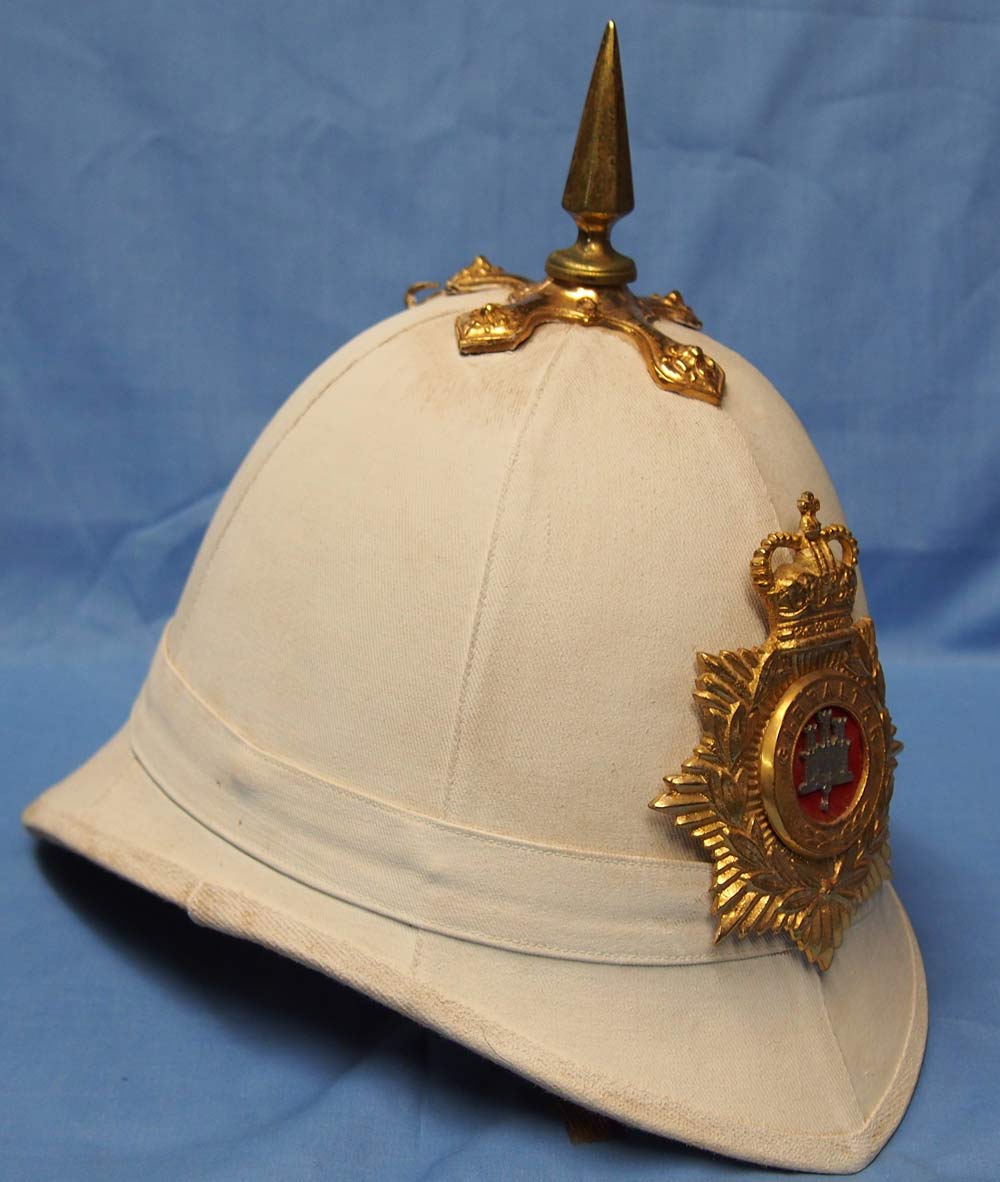
Externally this helmet looks much like the 19th century Foreign Service Helmet. The badge and fittings are lower quality however, and the body is made of fiberglass rather than cork! (Collection of the author)
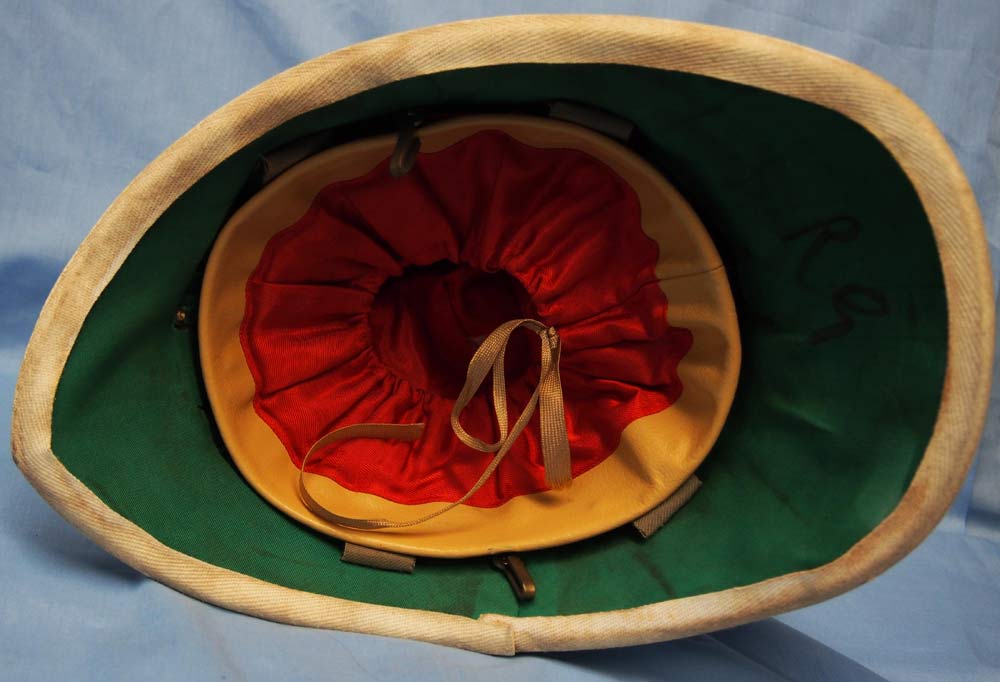
The interior of the helmet is designed more for comfort than the 1998 cork version. There are spacers to provide some ventilation while there is additional padding – no doubt necessary as the fiberglass is much heavier than cork. (Collection of the author)
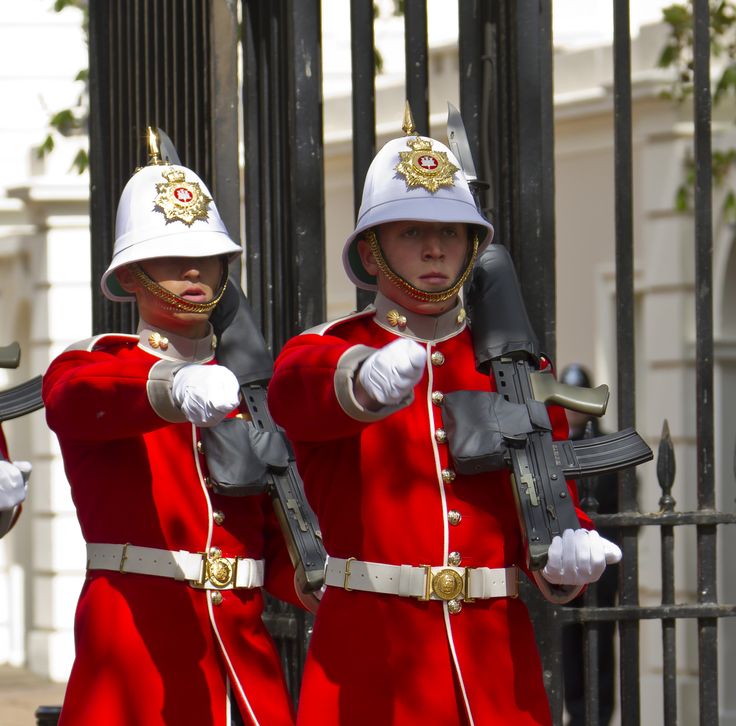
A pair of soldiers from the Royal Gibraltar Regiment on guard duty in April 2012. These men are armed with SA80 assault rifles and when paired with these Foreign Service Helmets have an anachronistic appearance!
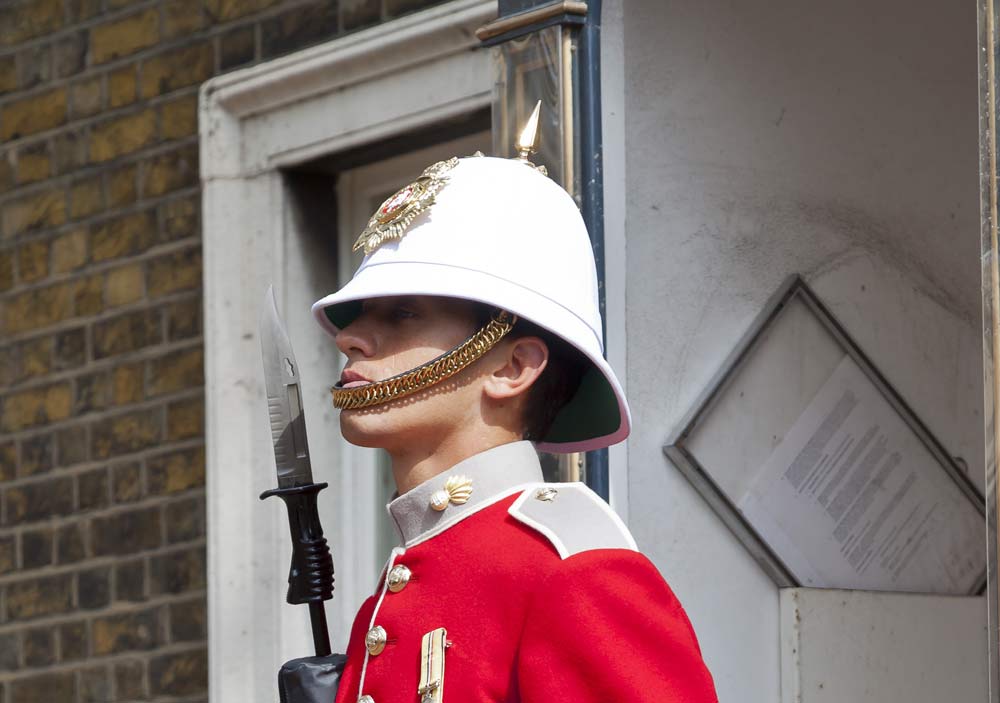
A close up of this soldier shows that the badges – as with the example in the author’s collection – were all crudely attached. These look good at a few feet away however.
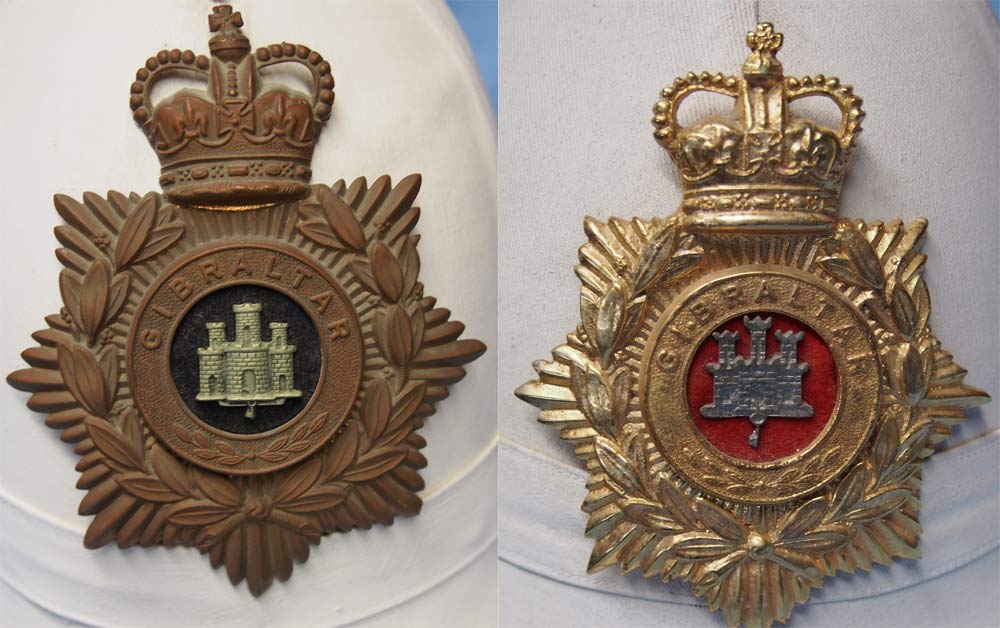
Quality just isn’t what it used to be sadly. A side-by-side comparison of the helmet plates. On the left is a plate that almost resembles a Victorian Queen’s Crown other ranks helmet plate, while the plate on the left lacks detail in the castle and even in the crown. It also looks like a cheap copy, but in fact this is exactly the same as what the unit was issued – no doubt a cost saving measure.
However, the pair of these helmets came up for sale at auction recently, and were listed simply as “bandsman” helmets. As the reader can expect this reporter was delighted to have found that these were in fact not just bandsman helmets but the very ceremonial helmets that were used by the Royal Gibraltar Regiment for those very special duties!

I’m an American Royal Gibraltar Regiment and Gibraltar Defense Force re-enactor/ collector. Your article was most informative. I have been looking for one of this helmets for years. I have made friends with a couple of soldiers from the regiment using social media, but no luck getting this piece for my collection. Thank you for sharing your info and pictures!